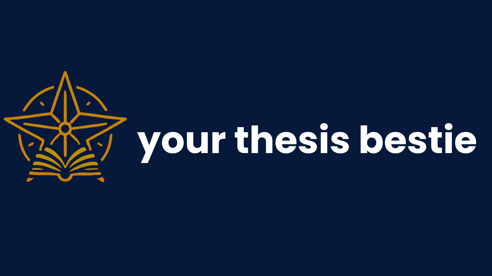Beauty, Bias, and Employment: Understanding Appearance-Based Discrimination in Hiring Practices
Explore the impact of appearance-based discrimination in the workplace and its influence on hiring practices. Discover research topic ideas on employment bias and how appearance affects job opportunities.
QUANTITATIVE AND QUALITATIVE RESEARCH
Realyn Manalo
5/26/20253 min read


In the Philippine labor market, where visual presentation remains a powerful cue in professional evaluation, beauty-based hiring bias continues to thrive silently. While skills, education, and experience are widely emphasized in job advertisements, unspoken expectations related to physical appearance often shape recruiter preferences—particularly in client-facing and service-oriented roles. From polished grooming in banking to "presentable looks" in hospitality, physical attractiveness can become a hidden form of capital. Yet, this cultural fixation on beauty may mask discriminatory practices that disadvantage applicants based on weight, facial symmetry, or perceived grooming standards. In an age where online applications and video interviews are common, this research aims to critically examine how beauty premiums and aesthetic labor influence access to work opportunities—and how these biases can be mitigated through policy reform and awareness.
Who Can Use These Topics
This research is ideal for students and professionals pursuing the following courses or strands:
College Programs:
BS Psychology
BA Sociology
BSBA Human Resource Management
BA Communication
BS Entrepreneurship
AB Political Science
Senior High School Strands:
Humanities and Social Sciences (HUMSS)
General Academic Strand (GAS)
Why This Topic Needs Research
Although past studies uncovered the presence of appearance-based discrimination, significant research gaps remain in terms of long-term impact, cultural variation, and bias intervention:
Unexamined long-term career effects: While Shapir and Shtudiner (2022) confirmed that physical beauty shapes hiring in CPA firms, they did not explore how early-stage discrimination influences long-term salary progression, job satisfaction, or promotion opportunities across an employee’s career trajectory.
Limited evaluation of anti-bias strategies: Goulão et al. (2024) identified callback discrimination based on weight and beauty, but future research must test whether solutions like blind hiring, anti-bias training, or image-free résumés are effective across industries and cultural environments.
Cultural blind spots in perception research: Kelton (2024) showed how attractive women were perceived as less competent in male-dominated jobs. However, her research focused on Western contexts, leaving a gap in understanding how attractiveness intersects with gender in more collectivist or patriarchal societies.
Intersectional identity left underexplored: Wolfe and Patel (2024) showed that attractive self-employed women earned more, but only when personality also aligned with stereotypes. Still, the study did not analyze how race, gender identity, or grooming behavior interact with appearance bias in entrepreneurial spaces.
Lack of real-world labor market validation: Abueg et al. (2020) demonstrated beauty premium bias in job simulations in the Philippines but noted that real-life hiring data and broader industry-based studies are still lacking.
Organizational interventions not yet tested: Mariano et al. (2023) confirmed that body image shapes self-esteem at work but didn’t investigate whether HR support systems—like counseling, workplace diversity programs, or inclusive grooming policies—can reduce internalized appearance pressure.
Service work aesthetics untheorized across classes: Del Rosario-Rondilla (2020) captured how Metro Manila salesladies used makeup to assert agency, but similar strategies in other marginalized or male-dominated roles (e.g., call centers, food delivery) remain underexplored in Philippine scholarship.
Feasibility & Challenges by Target Group
Get Your Free Thesis Title
Finding a well-structured quantitative research topic can be challenging, but I am here to assist you.
✔ Expertly Curated Topics – Not AI-generated, but carefully developed based on existing academic studies and research trends.
✔ Comprehensive Research Support – Includes an existed and updated research gaps, explanation of variables as well as SDG relevance.
✔ Personalized for Your Field – Get a thesis title tailored to your academic requirements and research interests.
Prefer video content? Subscribe to my YouTube Channel for expert insights on research topics, methodologies, and academic writing strategies.
References
Abueg, L. C., Hubilla, P. G. O., Lozano, F. M., Valdivieso, P. I. L., & Valencia, M. M. S. (2020). Penalties and some counterfactuals to beauty premium: evidence from a job search simulation experiment. DLSU Business & Economics Review, 30(1), 15-29.
Del Rosario-Rondilla, A. (2020). “Charming Eyes”: Exploring Agency through the Beauty and Makeup Practices of Salesladies in Metropolitan Manila’s Department Stores. Social Transformations Journal of the Global South, 8(1), 5.
Goulão, C., Lacomba, J. A., Lagos, F., & Rooth, D. O. (2024). Weight, attractiveness, and gender when hiring: A field experiment in Spain. Journal of Economic Behavior & Organization, 218, 132-145.
Kelton, A. C. (2024). Devious or Dolls: Perceptions of Attractive Women in Online Hiring Processes (Doctoral dissertation, New York University).
Mariano, K. J., Quintana, R. M. J., & Reyes-Garcia, T. M. (2023). Work and Society: The Effect of Body Image on the Self Esteem of Bank Tellers in Metro Manila. Available at SSRN 4608759.
Shapir, O. M., & Shtudiner, Z. (2022). Beauty is in the eye of the employer: Labor market discrimination of accountants. Frontiers in psychology, 13, 928451
Wolfe, M. T., & Patel, P. C. (2024). Image isn’t everything: Personality attractiveness, physical attractiveness, and self-employment earnings. Small Business Economics, 62(2), 807-831.
